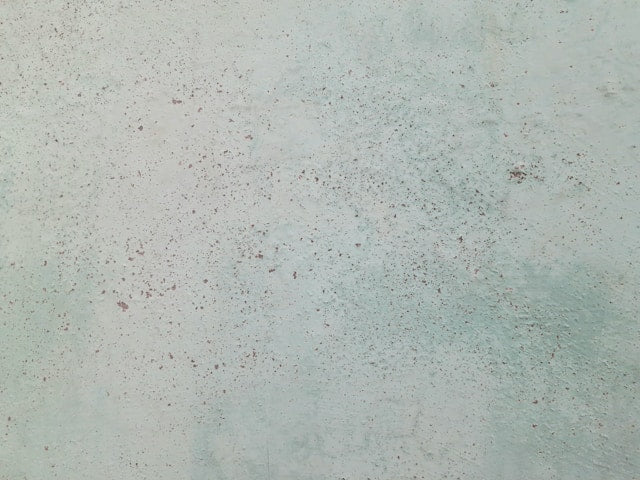When the Quiet is Tainted: An Introduction to Mold Toxicity

We often think of toxins as something external, dramatic, or foreign. Yet mold — a silent, insidious inhabitant in many homes — can quietly challenge our health in profound ways. In sensitive individuals, mold exposure can trigger a cascade of immune, metabolic, and neurological symptoms that ripple outward, including through the skin. Today, we explore how mold toxicity shows up, what to look for, and how we can gently support the body with nourishment and herbs.
Recognizing Mold’s Footprints in the Body
Mold and its byproducts (mycotoxins, volatile organic compounds) can enter the body through inhalation, ingestion, or even skin contact. From there, a susceptible individual might experience:
-
Respiratory & allergy symptoms: chronic congestion, sneezing, itchy or red eyes, cough, wheezing. Dr. Todd Maderis+4CDC+4Environmental Protection Agency+4
-
Systemic signs of inflammation and toxicity: fatigue, brain fog / cognitive decline, headaches, muscle or joint pain, mood shifts, dizziness. Parsley Health+3PMC+3Medical News Today+3
-
Skin manifestations: rashes, itchiness, dermatitis, or worsening of existing inflammatory skin conditions
-
Digestive or detoxification stress: because the gut, liver, kidneys, and lymphatic system are engaged in clearing toxins
In animal models, repeated mold exposure has been shown to activate innate immune pathways and affect brain regions associated with cognition, memory, and mood. PMC
Note: The science of “mold toxicity” and chronic mold-related illness (sometimes called “toxic mold syndrome” or CIRS) is still evolving. Some associations are debated, and diagnostic tests (especially urine mycotoxin panels) lack standardization and may yield false positives or negatives. AAAAI+2CDC+2
Foundational Steps: What to Do Before Anything Else
Before supplement or herb protocols, there are critical steps to address:
-
Remove the source & reduce exposure
-
Identify and correct moisture issues (leaks, poor ventilation, condensation). CDC+2Environmental Protection Agency+2
-
Use dehumidifiers or air exchanges to maintain indoor relative humidity below ~ 50%. CDC+1
-
Clean or replace mold-damaged materials (drywall, insulation, carpets) appropriately (sometimes with professional remediation)
-
Use HEPA-quality air filtration (with carbon/absorbent layers) to reduce airborne spores, mVOCs TIME+1
-
Support detox pathways gently
-
Gentle liver support (phase I/II)
-
Binders to assist toxin elimination
-
Hydration, lymph drainage, sweating (if safe)
-
Assess baseline status
-
Work with a knowledgeable practitioner (functional medicine, environmental medicine)
-
Labs to understand one’s detox capacity, immune activation, fungal markers, etc.
Foods & Herbs That May Help Mend & Protect
These are supportive, not silver bullets. Always work with your clinician, especially when combining herbs with other protocols.
Foods to Favor
-
Antioxidant & phytochemical-rich plants: berries, colorful veggies, leafy greens — to help mop up oxidative stress
-
Sulfur-rich foods: garlic, onions, cruciferous vegetables — support phase II detoxification
-
Fiber + gut-support foods: to bind and escort unwanted compounds out (e.g. beans, vegetables, seeds)
-
Clean protein: pasture-raised or wild sources; avoid mold-prone proteins or processed foods
-
Hydration & electrolytes: adequate water, mineral salts, and supportive broths
Also helpful: a low-mold diet — limiting foods that are commonly contaminated with mycotoxins (like certain grains, nuts, dried fruits, aged cheeses, coffee) while gradually reintroducing the safer options. Rupa Health
Herbal Allies & Detox Supports
-
Binders / adsorbents: Activated charcoal, bentonite clay, chlorella, zeolite — can help trap mycotoxins in the gut so they are eliminated rather than reabsorbed. Tendwell+2Dr. Will Cole+2
-
N-acetyl cysteine (NAC) / glutathione precursors: Support antioxidant recycling and detox pathways. Tendwell
-
Anti-microbial / anti-fungal herbs: thyme, oregano, tea tree, clove, holy basil (Tulsi), cedar leaf (used in mold contexts) Anna Marsh
-
Liver / renal support herbs: milk thistle, dandelion root, burdock, gentian
-
Adaptogens & gentle tonics: for resilience and stress balance (e.g. ashwagandha, schisandra, reishi)
Sample Protocol (Gentle Approach)
⚠️ This is for illustrative purposes only. Please consult your healthcare provider before implementing.
-
Start with binders (activated charcoal or bentonite) on empty stomach, 1–2x/day
-
Use phase II supporting supplements (e.g. NAC, methylated B-vitamins, trace minerals)
-
Build your food framework: antioxidant + low-mold focus
-
Introduce herbal adjuncts gradually (e.g. thyme, holy basil, liver herbs)
-
Ensure elimination (bowel, urine, sweat) is flowing well
-
Reassess every few weeks (laboratory, symptom journal)
Precautions, Realities & When to Seek Help
-
Some people may detox too aggressively: start slow to avoid “Herxheimer” reactions (feeling worse before better)
-
Herbs and binders may interact with medications; check with practitioner
-
In serious cases or immune-compromised individuals, professional environmental remediation and medical treatments may be required
-
Relying solely on urine mycotoxin tests can be misleading; they don’t prove cause-effect for symptoms. AAAAI+1
A Gentle Reminder
Mold toxicity, when it impacts health, often cannot be addressed overnight. Healing is a journey of reclamation — stabilizing exposure, nurturing detox capacity, and supporting the body with nourishment, herbs, rest, and patience. If your skin or body is whispering that something deeper is off, consider whether unseen mold or mycotoxin burden may be part of the story. Healing from within is rarely linear — but with care, grounded protocols, and wise support, resilience can be rebuilt.
Disclaimer: This is not medical advice. Seek professional guidance before making any changes to your nutrition, supplement, or lifestyle.

Leave a comment